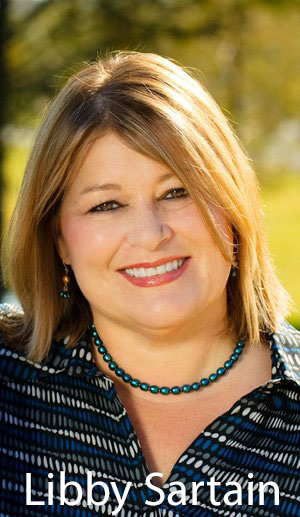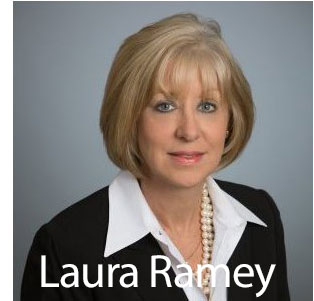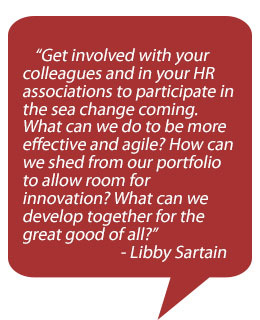HR in the New Year and the New World of Work Interviews with Icons and Influencers, Part I
![]() Print this Article | Send to Colleague
Print this Article | Send to Colleague
Josh Bersin recently wrote in HRMagazine (Jan/Feb 2015) that this year will be a transformational year in many areas of talent management. He asserts that the global economic recovery, changing demographics and rapid changes in technology have come together to redefine the entire nature of work and the workplace itself. Businesses must think about talent very differently than they have in the past.
Diversity and inclusion, brand and reputation, candidate experience and employee engagement, corporate purpose and mission, and even how you manage the hourly workforce are all related. So, Bersin suggests we need to expand our vision and think holistically about everything we do in HR as part of a "talent ecosystem."
Principal and founder of Bersin by Deloitte, Josh Bersin recently shared these nine predictions in HRMagazine:
- Culture, diversity, engagement and retention will become frontburner issues
- Performance management will continue to be redesigned
- More companies will deal with overwhelmed employees
- Corporate learning will be transformed and take on more importance
- Companies will redesign talent acquisition, leveraging network recruiting, brand reach and new technologies
- Talent mobility and career management strategies will become necessary to compete
- Leaders will invest in talent analytics and workforce planning
- Companies will take advantage of new tools in HR technology
- HR teams will get a new design and a new focus on professional development
Armed with Bersin’s ideas we were able to ask Texas’ HR icon Libby Sartain and HR influencer Laura Ramey for their predictions and advice, their thoughts and opinions on just what our organizations need to do to prepare for the new world of work.
Jill: Libby, make a prediction for how HR will redefine the workplace. Libby:Our world is becoming increasingly more complex and uncertain and this is changing the workplace and the worker. The question should be, how will HR respond?
Libby:Our world is becoming increasingly more complex and uncertain and this is changing the workplace and the worker. The question should be, how will HR respond?It is my great hope that we will focus our efforts primarily on the investment in talent—the collective knowledge, skills, experiences and behaviors of our people—in the most effective way possible. That means, not only fulfilling the talent requirements of the organization through talent acquisition and development; but also better use of the data and analytics available to spot patterns so that we stay ahead of the organizational requirements.
Work will become less "job’ oriented and organized more around projects and initiatives. So we need to manage greater mobility, help our workers gain the right skills, and manage in-house efforts of matching people to roles.
And, we need to continue to shed some of our out of date policies, rules and tools to create a workplace that is more flexible and workers who are more agile. For example, work is no longer a "place" so we need to figure out how to help our workers manage work life integration and create effective methods of assuring workers are both agile and productive. With multiple generations of workers in place with differing needs and expectations, we will need alternative models rather than one size fits all.
 Jill: Laura, give us insight in order to prepare and prioritize in this new world of work.
Jill: Laura, give us insight in order to prepare and prioritize in this new world of work.
- Executing flawlessly on the fundamentals (administrative HR)
- Becoming an employee advocate
- Partnering with the business as a trusted advisor
- Leading and driving change
Jill: Tell us how you’re making a difference in this area, Laura.
Laura:I joined Crestwood as their first HR Vice President to both lead and build a centralized and standardized HR function from the ground up. Crestwood grew from ~200 employees on my first day of employment to 1,000 employees six days later with an acquisition, followed by three additional acquisitions to 1,375 employees today. I am proud to lead a team of talented professionals that focus on activities supporting our employees and the business. These activities include the fundamentals of payroll, benefits, compensation and recruitment combined with HR operations that partner with the business to support growth, reduce costs and increase unit holder value. Our goal is to "Exceed Expectations".
As I mentioned, we are building an HR function and platform here at Crestwood and moving into our second year. The first year was focused on the fundamentals and employee relations. The second year will continue to refine what we have accomplished and begin to build the partnership role. The leaders on my team are each tasked with building and driving key components of the HR function. We are simultaneously working on both the fundamentals and business partner components of this vision.
Jill: And, Libby, what do you think we should be doing to prepare and prioritize for the now and the new world of work?
Libby:In order to be the strategic talent architect of the organization we need more predictive data analytics, better forecasting tools and methods for measuring effectiveness. HR must, most of all, understand the business in which we are working and to ensure that the talent is aligned with the mission of the business. Old methods of measuring performance need to be re-invented, to be more about productivity.
 Get involved with your colleagues and in your HR associations to participate in the sea change coming. What can we do to be more effective and agile? How can we shed from our portfolio to allow room for innovation? What can we develop together for the great good of all?
Get involved with your colleagues and in your HR associations to participate in the sea change coming. What can we do to be more effective and agile? How can we shed from our portfolio to allow room for innovation? What can we develop together for the great good of all? Jill: Specifically, Libby, what are you involved with currently?
There are several projects bringing the collective thoughts of HR Leaders together. As a board member of SHRM Foundation, our Thought Leader Initiative, in partnership with the Economist Intelligence Unit, is funding research on critical topics such as the Use of Talent Analytics for Competitive Advantage, the Evolution of ‘Work’ and the ‘Worker’ and Engaging and Integrating a Global Workforce. Our product will be publications on each topic. The SHRM Foundation Thought Leaders Retreat will explore each topic in depth over the next three years.
Just as exciting, I am working with a group of volunteer senior HR executives and a few academics on a project to define the future of HR. We believe HR needs a step change to meet the needs of our organization and ultimately perhaps to be re-wired. We are working in project groups looking at how HR delivers value, ways to improve the expectations of our constituents, what needs to change in HR, and at the pipleline for HR talent. This project will spawn publications and perhaps tools that can be universally adopted by HR professionals.
To envision and create HR’s future, I am working on an e-book with Dave Ulrich and Bill Shiemann—The Rise of HR. Our work is using the wisdom of crowds logic and we have invited HR thought leaders to share their answers to a relatively simple question: What do HR professionals need to know or do to be effective in today’s and tomorrow’s business world?
Seventy-two HR thought leaders from industry, academia, consulting, associations, and government have put aside commercial and competitive interests to offer global, collaborative, and innovative perspectives on the future of HR. With HRCI’s sponsorship, this book will be freely donated to over 1 million HR professionals worldwide so that HR opportunities can be realized.
What do Texas HR professionals need to know or do to be effective in today’s and tomorrow’s business world? The new world?
As Libby Sartain says, we need to invest in talent, using data and analytics to effectively fulfill the organization’s needs. We also need to manage greater mobility and be agile enough to shift with changing priorities, projects and initiatives. And, we need to shed some of the old—old policies, old rules and old tools that no longer serve the flexible workplace of the future.
It’s time to be bold, innovative and forward-thinking, according to Josh Bersin. As he put it, yesterday’s approaches don’t necessarily make sense today. In his words, we need to re-engineer the workplace and rethink the way we attract, engage and manage people. We need to try new things, deliver bold solutions and drive our businesses forward.More about Libby Sartain: After a distinguished 30 year career in human resources Libby Sartain is now an active business advisor, Board Member, and Volunteer. As head of HR for both Yahoo! Inc. and Southwest Airlines, Sartain led significant business transformation initiatives as a member of executive leadership teams and guided global human resources efforts focusing on attracting, retaining, and developing employees. Her focus has been growth companies where she developed employment brand strategies that helped grow the workforce exponentially while establishing company reputation as a leading employer of choice. Both Yahoo and Southwest were listed on the Fortune 100 Best Companies To Work For in America and the Fortune 500 during her tenure.
Laura Ramey is an international HR executive with expertise identifying top talent, coaching newly-formed teams and leaders, and developing critical relationships in a global matrix environment. With more than 15 years’ recruiting and HR experience, Laura currently serves as Vice President, Human Resources of the Crestwood family of companies which includes two publicly traded master limited partnerships (Crestwood Equity Partners LP and Crestwood Midstream Partners LP). Crestwood owns and operates midstream assets reaching across the energy value chain, serving producers and users of hydrocarbons in premier shale plays across the United States. Laura joined Crestwood as their first HR VP to both lead and build a centralized and standardized HR function. The company has nearly 1400 employees today.
